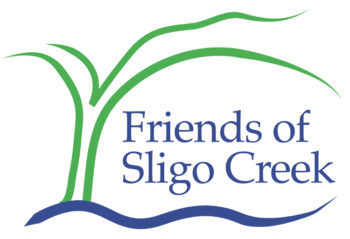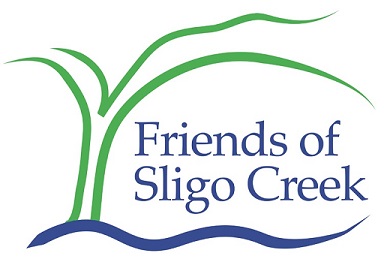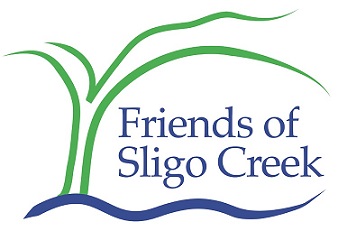Current Advocacy Issues
Current advocacy issues span a variety of policy areas. The following describes some of the long running advocacy issues for FOSC. We sometimes have many kinds of involvement – meetings, written or oral testimony, letters of support or objection, sometimes in coalition. Sometimes the issues raised will vary or evolve. We highlight some of them below.
Beltway Expansion (I-495 and I-270)
For years then Governor Hogan and the state DOT pursued adding toll lanes to Interstate 270 and 495. When Governor Wes Moore was elected, he said he would address environmental and equity concerns; however, he currently is seeking federal grants to complete the unmodified project despite its problems. The current proposals under consideration do not include status quo (little or no changes) or mass transit alternatives. For more up to the minute information, visit the Citizens Against Beltway Expansion website.
Spring 2024: A federal judge dismissed the lawsuit against the I-495/I-270 toll lanes filed by the MD Sierra Club, Natural Resources Defense Council, FOSC and others. The lawsuit against the MD Dept. of Transportation (MDOT) and the Federal Highway Administration, filed in 2022, charged that the environmental review of the project failed to meet several federal requirements. Here was the testimony: 200+ page document of technical and legal comments, and the press release. The groups who brought the lawsuit are reviewing the
decision and considering their options. Earlier in 2024, the US Dept. of Transportation rejected MDOT’s application for federal grants to fund the construction of the toll lanes. While MDOT will reapply for these grants, the full funding sought represents a significant share of the federal grant budget for highway construction for the entire country.Summer 2020: The State released the Draft Environmental Impact Statement in July 2020. It is 18,000 pages including attachments. The Montgomery County Planning Board (MNCPPC) testified on July 15, 2020 with strong concerns about the DEIS, submitting 63 pages of written testimony. MNCPPC owns the land and provided residents with significant information not otherwise available. Read FOSC’s testimony from August 2020 on the Letters and Testimony page.
The Purple Line Light Rail Project
In general, FOSC supports mass transit to limit pollutants and facilitate pedestrian, bicycle and other non-motorized uses. Accordingly, FOSC conceptually supports the light rail Purple Line that will extend from Bethesda to College Park, going through Silver Spring and across Sligo Creek and Park, on Wayne Ave. However, there are a few caveats; the construction of light rail line has resulted in hundreds of trees being cut down over the route, and several construction-related polluted run-off issues into Sligo Creek and probably some number elsewhere.
FOSC has urged much greater commitment to (re)planting of trees by supporting Maryland 2024 House Bill HB 80, which would fund tree replacement along the Purple Line. With Montgomery Parks, we have mostly successfully advocated for the creation of stormwater projects along the route. This was despite the intransigence of the State of MD in refusing to do stormwater retrofits to the entire area that was to be dug up and reconstructed (as Montgomery County otherwise would have required). FOSC also serves on two Citizen Advisory groups on an ongoing basis. See specific letters sent to the MTA, the Central Maryland Transportation Alliance and the Chairperson of the MD House Environmental and Transportation Committee on the Letters and Testimony page.
The Purple Line has proceeded in fits and starts, and not without a massive crisis primarily over cost overruns, which led the original contractor consortium to quit and a new consortium to be hired. Construction is actively proceeding in the Sligo watershed.
PFAs and Synthetic Turf
PFAS: Known as PFAs and PAHs, these per- and polyfluoroalkyl substances have been shown to pose serious health and environmental dangers, including hormone disruption. There are indications that they are carcinogenic. PFAS are used in many products including firefighters’ foam, many waterproof clothing products, personal care items, and in synthetic turf. Difficult to detect in water, they are nonetheless ubiquitous, and difficult or impossible to remove from the environment. Often called “forever chemicals” because they do not break down in the human body or the environment.Astroturf or Synthetic Turf: In the environment, synthetic turf is one of the more dangerous and widely used products containing PFAS and heavy metals. The products are hot to play on, players more prone to injury, expensive to install and short lived. They get torn apart into non-biodegradable chemicals as well as plastic and rubber particulates, which go into nearby water bodies. They currently are impossible to remove by sewage treatment and other methods. Disposal is massively expensive and legal only in landfills. For more detailed information, contact Safe Healthy Playing Fields.
State Legislation and Policy Changes: FOSC has received promises from Montgomery Parks that they would not use plastic/rubberized materials in playgrounds on ground surfaces. That’s a first step in Montgomery County, though the school system has not adopted this position. Advocates have sought so far unsuccessfully to ban the use of synthetic turf playing fields in Maryland. In the interim they have concentrated on bills to track where used synturf goes – it only lasts a dozen years if that. Some have been dumped on open land, contravening disposal requirements, triggering tracking legislative action.
Proposed Legislation – May 2024: Maryland House Bill HB 0457, proposes to STUDY the typical maintenance practices and costs for disposing synthetic turf, passed in the House and Senate. It was a mild substitute for tracking disposal of synthetic turf fields, which itself was only a first step to banning its use.
Maryland House Bill HB 1147 passed the Maryland General Assembly. It would have prohibited any person from installing, supplying, selling, soliciting or offering for sale playground surfacing materials that contain a certain concentration of lead or PFAS chemicals. It also would have prevented localities from adopting more lax regulations to playground surfacing materials than the State regulations. The bill died in the Maryland Senate. Again.
Ellsworth Drive Synturf Proposal
Peterson Companies, a prominent developer, decided to renovate the block of Ellsworth Drive in downtown Silver Spring that’s closed to vehicles and already a pedestrian walkway. The developer wanted to add a layer of astroturf (synthetic turf) to what is now the asphalt road. This was in theory to make it more inviting to the public and particularly young children. Unfortunately, astroturf has serious health and environmental dangers. As the project was very visible, FOSC decided to oppose that plan.
FOSC held meetings, testified before the Montgomery Planning Board, and gave a technical paper on the topic. The formal issue raised at the County level was whether it would “abandon” the road so the developer could take it over. Read the FOSC testimony. There has been no movement on the issue in recent years, and we speculate the developer decided it was not worth the effort to proceed. In summer, the area has tables and chairs for people to use.
Excessive Winter Salting – Reduction and Reporting
The Water Quality Committee conducts a Winter Salt Monitoring program in Sligo Creek and Long Branch in which we both collect water samples to check salinity, and report piles of salt left on roads and sidewalks. As well, we are working with relevant agencies, helping them to change their policies and practices regarding salting of roads. The program uses free testing kits provided by the Izaak Walton League of America.
FOSC organizes volunteers to measure salt in the creek. The results show that chloride levels in the creek markedly increased during the winter of 2024, sometimes to levels 3 times the toxic threshold for aquatics. Chloride is an element that makes up a large part of the salt applied to roads after snowstorms. Salt sometimes gets spread too densely and too broadly, killing plants along roads. When the snow melts and runs off into Sligo Creek, it takes the salt with it. Aquatic life rarely has a high tolerance for high concentrations of salt—salt can fatally affect both osmosis and protein function in fish, salamanders, and other organisms including macroinvertebrates and microscopics—affecting the availability of insects for fish, birds and up the food chain.
FOSC organizes volunteers to measure salt in the creek, and similarly encourages our members to join in an excessive road/sidewalk salt reporting program that allows anyone in the community to notify the county if they see a large pile of salt somewhere in the watershed. See the Water Quality Salt Monitoring page for more information. FOSC also sent letters to the Maryland Department of Transportation, Montgomery County Department of Transportation and County Executive Marc Elrich urging better training, higher quality equipment standards for contract salt applicators, and other measures to reduce excessive salt use. These can be viewed on the Letters and Testimony page, March 2024. We advocate for brining roadways instead of applying the typical rock salt/sand mixture; brining can be equally and sometimes more effective in Maryland temperatures and uses 60% less salt. The county has been purchasing brining equipment and is increasingly employing it during appropriate periods to reduce the use of salt.
Gas Leaf Blowers
Gasoline-powered leaf blowers are dirty. They generate wind at speeds ranging from 150 to 280 miles per hour, spewing whatever is on the ground — dirt, excrement, mold, chemicals, particles — into the air. As much as 30% of a gasoline-powered leaf blower’s fuel is released un-burned into the air. Known human carcinogens are among the pollutants that leaf blowers emit.
The air pollution that leaf blowers pump out includes fine particulate matter, carbon monoxide, oxides of nitrogen, and the greenhouse gas carbon dioxide. The California Air Resources Board estimates that operating a professional backpack leaf blower for one hour produces as much ozone-forming air pollution as driving a light duty passenger car 1,100 miles.
People of color already are disproportionately exposed to the long list of risks—including lung cancer–posed by fine particulate matter pollution, just because of where they live. They should not have to experience additional, avoidable health burdens, on the job or from lawn care at home.
FOSC reached out to Montgomery County Council to pass a bill prohibiting gasoline-powered blowers. In a remarkably short time, Council took up and passed it. It bans the sale of all gas blowers as of July 1, 2024. A year later on July 1, 2025, use of gas powered blowers will be prohibited. To facilitate the turnover, regulations promulgated by the county Department of Environmental Protection put forward a voucher program, particularly aimed at small landscape companies who may be more economically affected by the change.
Forest Canopy Preservation and Restoration
The forest canopy worldwide has shrunk dramatically. This is true as well in Montgomery County. In the County, trees are protected/planted/controlled in four ways:
1) Trees on rights of way (county land) are county or state responsibility.
2) Where there is a development or significant modification, the County Planning department has forest conservation requirements as part of the permitting process.
3) Forests and trees on private property are a separate matter, and are largely uncontrolled. There are free tree-planting programs offered by county Department of Environmental Protection and the Planning Department.
4) The remaining trees are in park land and are controlled by MNCPPC – Montgomery Parks.Development: FOSC works on these issues largely with the county Forest Conservation Coalition. Over a period of 4 years, we finally got a development-related enhanced support for existing forest canopy. It’s an advance over the prior forest protection from development, but still a ways to go.
Example: 9801 Georgia Avenue. A medical building, parking lot and about 1.5 acres of a wooded area is are up for development. The developer is seeking to clear the entire area, including the woods, arguing that most of it is in bad shape. It’s certainly worse than a few years ago when the process began. FOSC testified at the Planning Board against cutting the wooded area, and with dozens of others testifying on various issues, yet the Planning Board voted unanimously to approve it. We have obtained a pro bono law firm and have petitioned the court to overturn the decision. Stay tuned.
Street Trees: The county wants more funds to cut down dead trees in the street right of way, and to grind the stumps to speed up the process of replanting replacement trees. Street trees are almost always stressed trees and don’t last as long as others. We support additional funding and additional planting of trees along roadsides. Residents who wish to cut down street trees are required to get permits from the county and the state to do so.
Private Trees: Currently there are few protections for trees on private property. Heritage Trees or Significant Trees (based on species size) have some protection, but no permits are required to cut down regular full-sized trees unless you’re in a particular jurisdiction that requires a permit, for example City of Takoma Park. We seek to address this in the future.
Former Washington Adventist Hospital Development Site
Washington Adventist Hospital has moved upcounty. Some of its land and buildings will be absorbed by the Washington Adventist University. But the main hospital building, and several others will likely be demolished, leaving land use decisions about that site, the accompanying parking lots, and a very steep slope going directly into Sligo Creek, up for grabs.
The county has been using the Takoma Park Minor Master Plan as a broad brush to plan what should happen to the excess campus land and buildings, as well as the future of the more populated part of Maple Avenue that fronts the property on the west side and leads toward downtown Takoma Park and the Metro.
FOSC has advocated that open spaces be kept, and many more trees planted. We also expressed strong support for implementing stormwater infiltration projects on the long slope from the site to Sligo Creek in order to keep the area intact in the long term, and to handle runoff and pollution during any upcoming construction.


